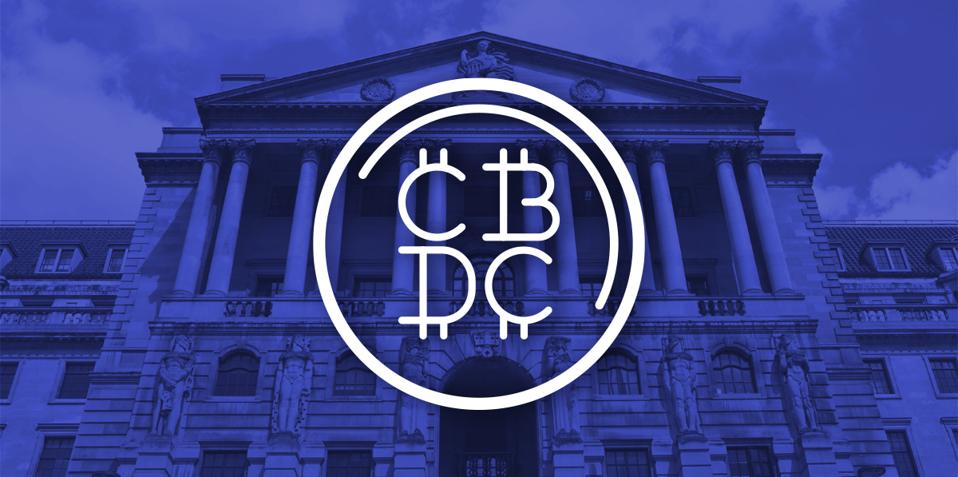Progress Toward Global Digital Currency
The Key Phrase Is "Recovery Tool For Governments"

FORBES_CBDC
COINFIRM 2020
Central Bank Digital Currencies (CBDCs) have been a key topic for blockchain technology enthusiasts, futurists, governments, and policymakers recently. In today’s world, they are evolving from a topic of interest to a high-potential tool for economies around the world to better address the massive economic impact of the COVID-19 pandemic and beyond.
Policymakers, including central banks and governments, are uncertain where, how, and what tools to use to save their economies as they grapple with the crisis and prepare for the next. As a result, it has increased the interest in digital currency innovation for the decade to come.
To succeed as a significant component of central bank recovery toolkits, however, States must be serious about meeting the privacy, transparency, and trust expectations necessary for them to become a reliable means of exchanging value within the global economy.
Technologies that support and automate while mitigating risk at scale are a vital component to the functioning of CBDCs if they are to offer any help in addressing current economic factors, while maintaining privacy of users by design and not subject to trust.
In Japan, for example, Coinfirm successfully built an AML and analytics solution for a blockchain-based coin, pegged to one of the leading traditional currencies. Such solutions for blockchain assets dramatically increase efficiency and effectiveness in comparison to traditional assets, not to mention the potential for real-time policy-making and programmability.
Industry experts agree that these points are important. A new report written by University College London researchers and industry experts Dr. Geoffrey Goodell, Dr. Paolo Tasca, and Hazem Danny Al-Nakib seeks to equip governments and central banks with a mechanism to help ensure the continuity and sustainability of their economies, along with both speed and transparency of payments with their National Digital Value Container (NDVC).
“The question to start from is how can we facilitate the necessary economic activity and exchange in all circumstances in today’s digital economy while maintaining privacy and reimagining what we are trying to solve” adds Al-Nakib.
The UCL report lays out a ‘gatekeeper’ type structure where the central bank or government manages the issuance of a new national digital currency through a new category of supervised businesses named Money Service Businesses (MSBs).
Here’s why this proposal fits the realities imposed by the pandemic, according to Tasca: “This crisis is a crisis of the real economy and not the financial economy. It is heightened by low interest rates, heightened levels of public and private debt, and of course, the impact of the pandemic, the pressure on healthcare systems, and employment. Policymakers need creative tools in their monetary and fiscal policy in order to fend off a future recession.”
With Digital Value Containers (DVC), digital claims upon value are guaranteed by a central bank, in the form of CBDC, or under the Government, in the form of Fiscal Digital Currency (FDC). A DVC would allow any asset to be issued, irrespective of whether it is launched by the central bank or the government. This is done by finding the appropriate model that addresses a trilemma of mutual constraints: privacy, control, and scalability. Al-Nakib continues to explain that “DVCs can theoretically be used for any fungible asset and represent a complementary national payments infrastructure.”
There are several forms of ‘money’ in today’s economy: cash, deposits, and reserves, each of these with limits on speed, transparency, and privacy. A CBDC can be a fourth instrument; an FDC may also be issued by the Treasury as fiscal credits pegged by fiscal policy or to government-issued securities according to the report, thereby broadening access to safe, stable and risk-free instruments of exchange.
According to Tasca, “A Digital Value Container equips fiscal and monetary policymakers with a new tool that enables them to manage the quantity and price, reach the real economy, and stimulate it in new ways with novel features, for example through direct fiscal programmes to get money to households and firms, albeit the digital value container could theoretically be for anything.”
The report also refers to creating a real CBDC issued by the central bank, rather than the synthetic CBDC that was highlighted by the Deputy Managing Director of the International Monetary Fund. A real CBDC becomes a new instrument that can be deployed in a more targeted way, customised with different features like expiration, vintages, and variants, which would serve to mimic things like interest rates, remuneration, and more. Uniquely, this scheme is privacy-preserving by design, ensuring trust as a fundamental consideration in today’s digital economy.

CBDC_002
COINFIRM 2020
To move forward on this path, central banks must consider automatisation and risk analysis at scale to allay legitimate concerns around AML and transparency while also analysing economic risks in real-time in order to respond. Goodell comments, “We approach a CBDC through the lens of the trilemma and show that the optimal system can maintain privacy by design through an actual CBDC without disrupting current two-tiered banking structures and the required regulatory oversight.”
The resulting proposal could change the way the world works, bringing greater, more secure, and seamless economic activity directly to every households’ and businesses, digitally connected devices through a secure yet private medium of exchange. As such, the right CBDC approach could help central banks unlock the vital economic activity needed to restart national economies in the wake of the COVID-19 pandemic.
The only question is whether policymakers will move with urgency. Will they move forward with innovations that enhance their monetary and fiscal policy toolkits to help them battle the current and future crises in the real economy in a way that brings new benefits while preserving privacy and trust without giving up sufficient regulatory oversight so that they can meet the needs of their economies?
Given the depth of this crisis, this national payment infrastructure is necessary as preparation for future crises.
